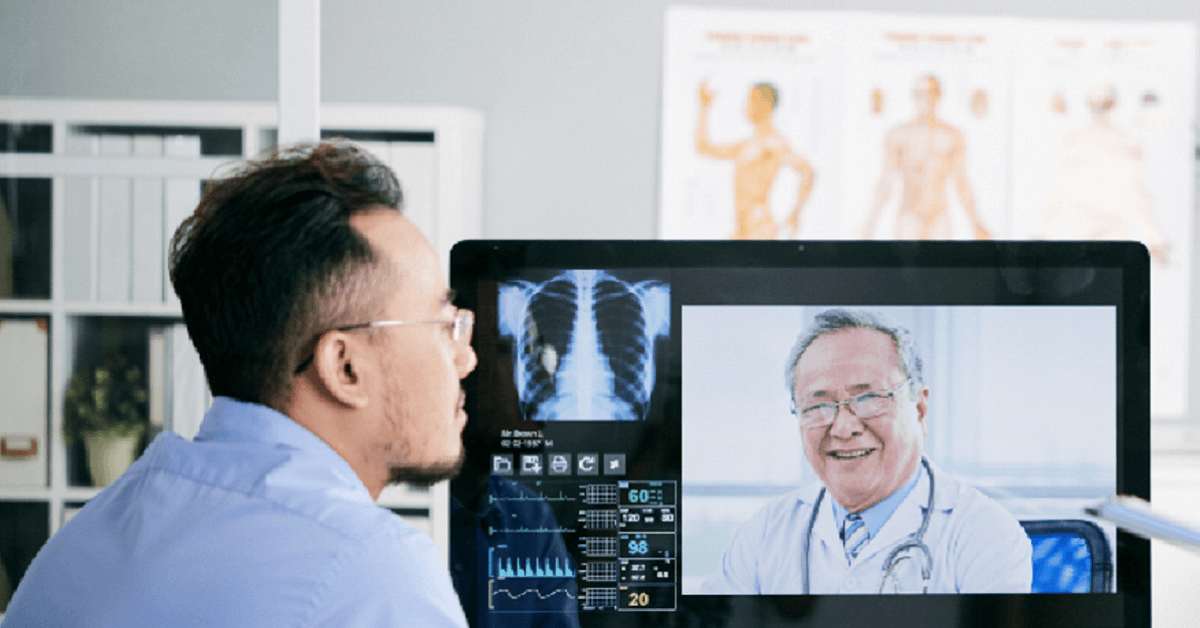Telehealth is a term that defines a very wide range of different health-related services and technologies such as remote monitoring, health education, telemedicine, provider training, provider communication, non-prescription delivery, and a lot more.
These technologies and services are often divided into two main categories called synchronous vs asynchronous telehealth. At times, the telehealth programs are considered under any of these umbrellas whereas at times they come under both. Let’s have a look at what is meant by these categories:
Synchronous vs asynchronous telehealth
When a new telehealth service or technology is launched, it is very important to understand whether it will be synchronous or asynchronous or it could be both.
Both of these categories help the patients and the health providers and are considered to be embellished with a lot of benefits for both.
Synchronous and asynchronous telehealth are very different from each other and it is very important to understand the significance of both types in detail. Let’s have a look at them separately.
Synchronous telehealth
Synchronous telehealth is the name that depicts all the services that happen in “real-time.” ATA has defined synchronous telehealth as:
“Interactive video connections that transmit information in both directions during the same period.”
Synchronous telehealth enables and allows a deep patient-provider meeting or an interaction that will allow the exchange of information efficiently and effectively.
It also offers the medical health provides an opportunity to check the patient physically along with acquiring the information regarding the patient’s health condition and the state of the disease for which he approaches the healthcare provider.

Synchronous telehealth examples are:
- Physical therapy appointments
- Evaluations of live video
- Phone call appointments with patients
- Real-time observation of patient’s symptoms
- Consultation between medical specialists and care provider
- Consultation regarding patients receiving the hospice care
- Real-time plan about the health care plan for the patient
Synchronous telehealth is known to provide access, convenience, and efficiency to the healthcare system by allowing the patient to comfortably communicate with their medical provider outside the premises of the clinic or hospital.
Patients are also able to access the concerned doctor or specialist virtually through a video or a call which otherwise is next to impossible because of financial, transportation, and geographic constraints.
Asynchronous telehealth
The ATA has defined asynchronous telehealth as:
“A term describing store-and-forward transmission of medical images and/or data because the data transfer takes place over some time, and typically in separate time frames. The transmission typically does not take place simultaneously.”
Asynchronous telehealth is also called the “store-and-forward” kind of communication between the patient and healthcare provider when they both are not live.
In asynchronous telehealth, the patient sends information to the provider and it is stored at the provider’s end until it is seen or checked by him.
This benefits the providers to check the information on their feasibility as well as save them from facing any kind of bandwidth constraint. So, in other words, the healthcare provider replies whenever his busy schedule permits him to do so.
On the other hand, asynchronous telehealth allows the patients to engage with their medical provider at any time or setting that suits them instead of a scheduled appointment without waiting for the provider to join at the same time.
Asynchronous telehealth is very prevalent, especially in the specialties that are dependent upon video or image sharing such as radiology, dermatology, ophthalmology, cosmetic surgery, and orthopedics.
Asynchronous telehealth is also used by patients to benefit from store-and-forward communication with the healthcare provider according to their feasibility as well.
Asynchronous telehealth examples are:
- Wound images
- Texts transmission between provider and patient
- MRI sharing or X-Ray
- Education quizzes
- Physical therapy exercises
- Patients report
- Artificial Intelligence (AI) bot
- Survey questions about symptoms
One of the oldest and most common methods of communication between the healthcare provider and patient is texting and this method is used in all the disease and infection groups.
A lot of medical providers use texting to keep a check on the symptoms of the patients as well as remind them of their next virtual or in-person appointment. It is also a prized opportunity for the patients, caregivers, and providers to communicate and talk with each other directly with the help of any electronic gadget such as a mobile or a tablet.
Conclusion
Synchronous vs asynchronous telehealth services and technologies are a vital part of the medical and healthcare sector. It aids in making the communication between the patient and the healthcare provider better and more effective. Both provide platforms such as text messages, video calling, symptom surveys, virtual visits, education quizzes, medication reminders, and a lot more to assist the relationship between patient and healthcare provider.


